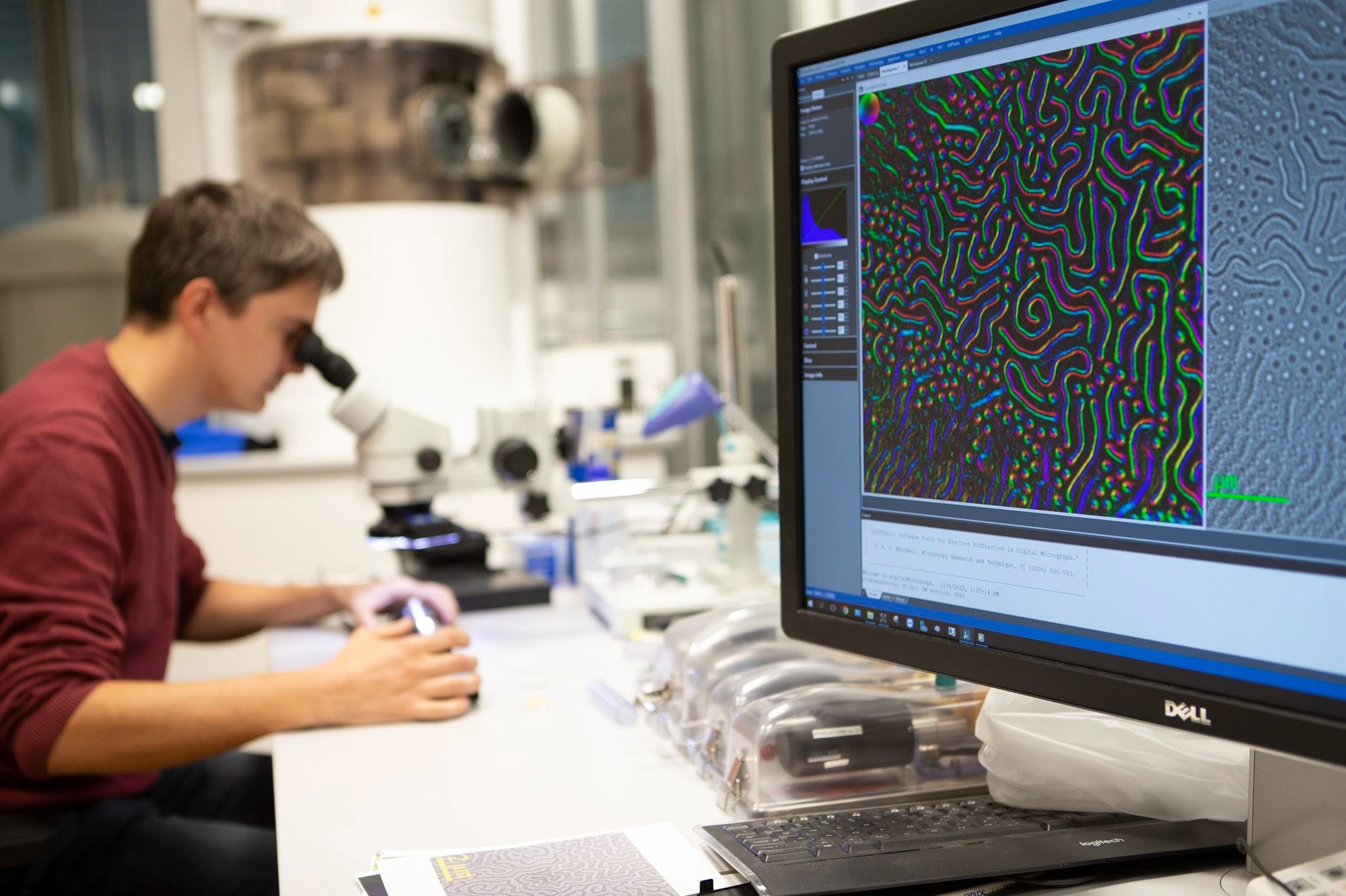Co-existing magnetic skyrmions and antiskyrmions of arbitrary topological charge at room temperature have been found in magnetic Co/Ni multilayer thin films by researchers from the Universities of Augsburg and Vienna.
 The measurements were carried out on this transmission electron microscope at the Augsburg Institute of Physics. The screen on the right shows spin textures. Image Credit: University of Augsburg / Thomas X. Stoll
The measurements were carried out on this transmission electron microscope at the Augsburg Institute of Physics. The screen on the right shows spin textures. Image Credit: University of Augsburg / Thomas X. Stoll
Their discoveries may lead to a paradigm shift in the study of skyrmionics. Through the use of information storage devices, in particular, the discovery of novel spin objects with arbitrary topological charge promises to advance both fundamental and applied research.
In a magnetic material, magnetic skyrmions are localized, stable topological magnetic spin textures that resemble a tornado. Skyrmions are suited for “abacus”-style applications in logic devices and information storage because they can be extremely small, with diameters in the nanometer range, and Skyrmions behave like particles that can be created, moved, and destroyed.
Researchers at the University of Augsburg, under the direction of Manfred Albrecht, have shown in their recently published article in Nature Physics, “Dipolar skyrmions and antiskyrmions of arbitrary topological charge at room temperature,” that these spin objects are only present in a distinct phase pocket in the stability diagram where the quality factor Q has a value of approximately 1. This value is determined by the ratio between the uniaxial magnetic anisotropy and the magnetic shape anisotropy.
The exact reasons why spin objects can be found in the stability diagram, their underlying formation process, and the necessary material properties that can now also be applied to other material systems were all determined by researchers with the help of extensive simulations conducted by Sabri Koraltan and colleagues from the University of Vienna simulation group, led by Dieter Suess, and supported by Nikolai Kiselev from Forschungszentrum Jülich.
We are very enthusiastic about the exciting insights gained by the discovery of these spin objects, which can be easily fabricated at room temperature. This is an outstanding scientific advance in the field of skyrmions and topological spin objects.
Manfred Albrecht, Institute of Physics, University of Augsburg
These nanoscale skyrmionic spin textures provide extra degrees of freedom and can be embedded in thin-film devices enabling different applications ranging from unconventional computing to new storage concepts.
The fact that a spin-polarized current causes spin objects to move is another crucial feature. The polarized electron spin in a conducting magnetic material will cause a torque on the magnetization known as the spin-transfer-torque when a charge current flows through it.
This torque can set the higher order skyrmions in motion.
Using micromagnetic simulations we could demonstrate the efficient control of the motion of these extraordinary spin objects, which opens up further opportunities for skyrmionic devices.
Sabri Koraltan, Doctoral Candidate, Computational Group, University of Vienna
Lorentz transmission electron microscopy at the University of Augsburg was used extensively in the study, which is currently being expanded to visualize the current-induced motion of these multiple charge spin objects.
To what extent our predictions about their motion characteristics can be confirmed experimentally will be very exciting to research in the near future.
Mariam Hassan, Postdoctoral Researcher, University of Augsburg
Journal Reference:
Hassan, M., et al. (2024) Dipolar skyrmions and antiskyrmions of arbitrary topological charge at room temperature. Nature Physics. doi.org/10.1038/s41567-023-02358-z